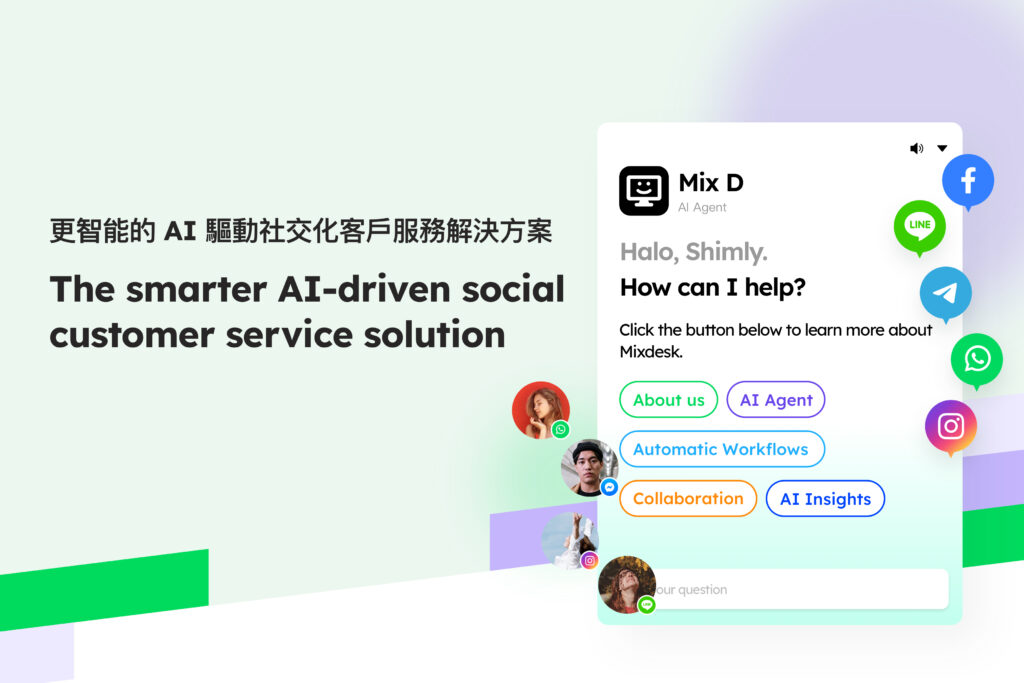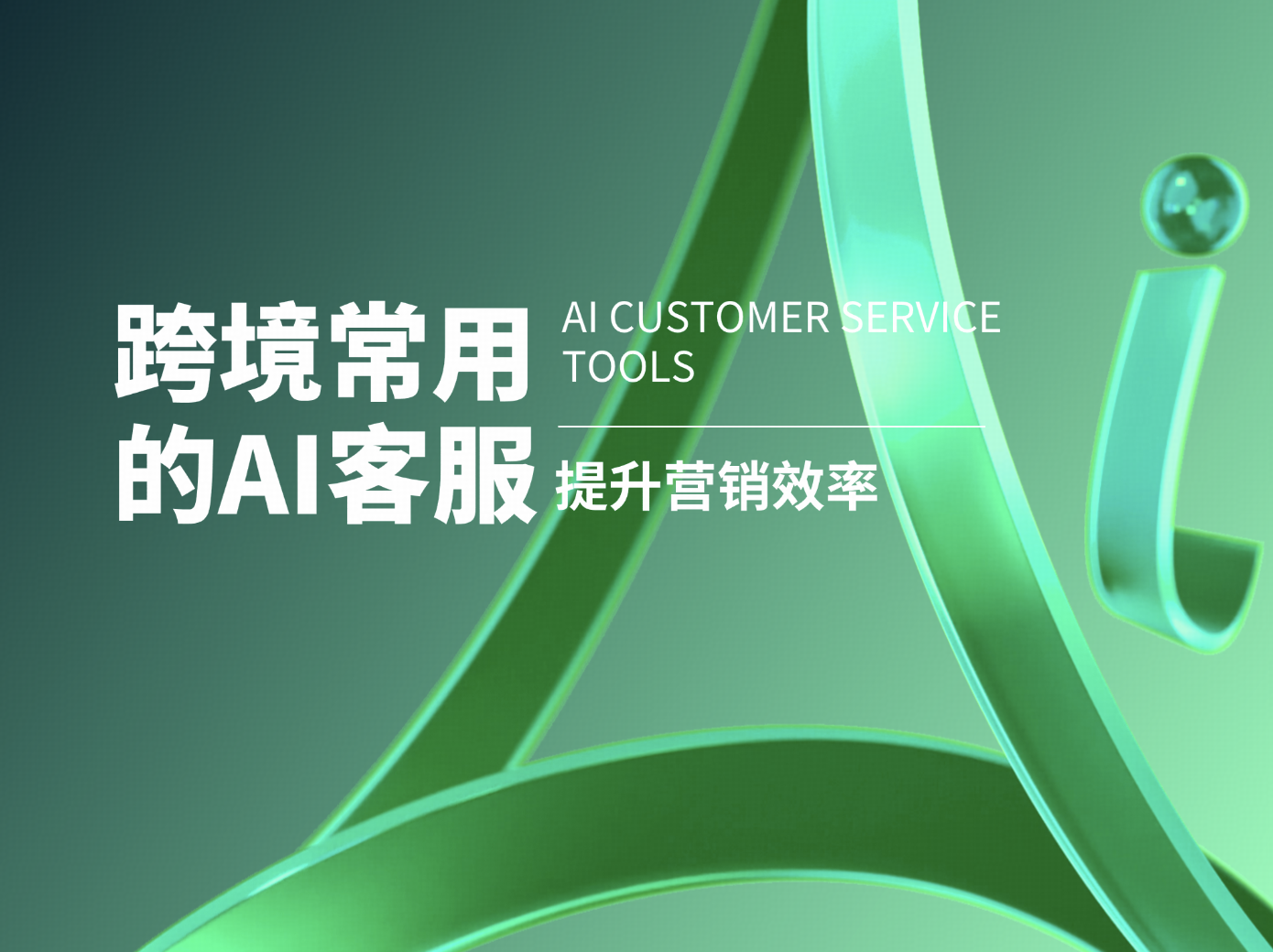Author of this article:Miya, Search engine optimization expert
With the rapid development of science and technology,AI customer serviceIt has emerged in many industries. Whether it is e-commerce platforms, bank customer service, or online education or medical and health fields, AI customer service plays an important role.
Compared with traditional manual customer service, AI customer service can not only provide24 hours a day service, It can also quickly respond to user needs and deal with a large number of routine problems, thereby improving efficiency and reducing enterprise operating costs.
However, what is the technical principle behind AI customer service? How does it optimize its own abilities through continuous learning? This article will delve into the working mechanism of AI customer service from multiple perspectives such as technical foundation, data-driven self-evolution, and practical application.
Mixdesk
AI Agent

Technology cornerstones: NLP and Machine Learning
AI customer service canEfficiently handle customer needs, inseparable from strong technical support. Its core technologies includeNatural Language processing (NLP) and machine learning, The two together promote the entire process of AI customer service from voice or text input to accurate response.
- Input processing: from text to understanding
When users ask questions to AI customer service through text or voice, the first thing to do isInput processing。 AI will decompose the content entered by the user and extract words, phrases, and grammatical structures. This process usually consists of two steps: first, the transformation and segmentation of speech or text; then, the analysis of the grammatical structure, so that AI can clearly know the role of each word in the sentence.
For example, if a user asks “When will my order be shipped” by voice, AI customer service will first convert the voice into text, and then analyze “order”, “When” and “delivery” as keywords to understand the user's needs.
- Intent recognition: Understanding the needs behind it
If AI customer service wants to give a suitable answer, it first needs to identify the user'sintent。 This is not simply matching keywords, but relying on pre-trained models to analyze the real needs of users based on context. For example, a user may ask “How can I apply for a return”. The task of AI is not only to understand the word “return”, but also to identify that what the user needs is a description of the return process, not the detailed information of the product.
This intent recognition ability is trained through a large amount of labeling data to help AI customer service more accurately understand the needs of different users, so as to provide corresponding services.
- Contextual understanding: make the conversation more natural
In order to make the dialogue with users smoother, AI customer service needs to haveContextual understandingThe ability. This means that it must not only understand a single question, but also be able to remember the content of the previous conversation, ensure consistent answers, and avoid repeated questions. For example, if the user has already provided the order number in the previous round of dialogue, the AI customer service will no longer repeat the inquiry, but will directly give a solution based on the information provided.
The advanced AI customer service system will use a memory function to store the dialogue history, and call contextual information in real time to optimize the response to improve the user experience.
- Generate a reply: from the model to the actual answer
After completing the input analysis and intent recognition, AI customer service will generate the response required by the user. This process is based on pre-trained language models or real-time calculations. AI will generate a natural and smooth response based on the existing content in the knowledge base, or through algorithms.
The generated reply must not only comply with grammatical specifications, but also have sufficient relevance and accuracy. For example, when a user asks “Help me write a blog”, AI will not only understand the request, but also adjust the content according to subsequent instructions. Through deep learning and optimization, the answers of AI customer service are getting closer and closer to the communication methods of human customer service, making the interaction more natural.

MixDeskThe AI customer service has adoptedAdaptive learning algorithm, It can be optimized according to the actual needs of the enterprise, and the response logic can be continuously adjusted for specific business scenarios to make customer interaction more accurate and efficient.
Data-driven self-evolution
The “wisdom” of AI customer service is not innate, it is gradually improved through a lot of data training and learning. With the increase of usage, AI customer service will obtain new information from multiple channels such as user feedback, historical customer service records, and social media data to continuously optimize its service quality.
- Supervised learning and model training
The initial training process of AI customer service is usually throughSupervised learningcompleted. Companies will provide a large amount of marked dialogue data, and AI will gradually grasp the answers to common customer needs by learning the pairs of questions and answers in these data. With the increase of training data, AI customer service has gradually become smarter and can cope with more and more complex problems.
- Adaptive learning and scene optimization
Unlike traditional customer service, AI customer service can be carried out according to the actual business needs of the enterprise.Adaptive learning。 For example, the return and exchange process of e-commerce platforms, bank account management, medical and health appointment registration, etc., AI customer service can be optimized and adjusted according to different business needs.
(The adaptive learning algorithm used by MixDesk's AI customer service can sense changes in enterprise needs in real time, and continuously adjust service strategies according to changes to improve interaction accuracy. )
- Real-time updates and knowledge base management
AI customer service knowledge baseIs the core of its continuous evolution. In the face of rapidly changing markets and user needs, AI customer service needs to haveReal-time updatesThe ability. Whenever a new product is released, a policy update, or a marketing campaign is launched, AI will learn and update its knowledge base in a timely manner to ensure that the information provided is up-to-date and avoid giving users inaccurate answers.
Application scenarios of AI customer service
AI customer service has alreadyWidely used in many industries, And showed huge advantages in different scenarios. It can not only improve service efficiency, but also improve the customer experience through personalized service.
- E-commerce industry
In the field of e-commerce, AI customer service has undertaken multiple tasks such as product recommendation, order inquiry, and after-sales service. It can automatically recommend related products based on users' browsing history and shopping preferences to enhance the customer shopping experience.
In addition, AI can also handle most after-sales issues, such as return and exchange applications, refund inquiries, etc., to reduce the burden on manual customer service.
- Financial industry
AI customer service in the financial industry can quickly respond to customers' questions about bank accounts, credit cards, loan applications, etc., and provide users with convenient self-service.
For example, customers can quickly check their account balances through AI customer service, learn about loan product information, or apply for a credit card to report the loss. AI customer service can also provide customized financial advice and services according to user needs.
- Medical industry
In the medical field, AI customer service provides patients with services such as health consultation, registered appointment, and medical insurance claims. It can answer common health questions and help patients choose appropriate medical services. In addition, AI customer service can track the progress of patients in real time and provide them with personalized health recommendations.
- Online education
In the online education industry, AI customer service enhances the interactive experience in the learning process by answering questions from students and parents, recommending course resources, etc.
Students can consult AI about course content or homework issues at any time, and AI customer service will provide customized learning suggestions based on students' learning progress and interests.
Maybe you want to see:
-
How to choose a batch management tool for overseas social media? An indispensable practical guide for cross-border operations
With the continuous increase in the number of social media platforms and the growing fragmentation of customer communication channels, deploying a professional batch management tool for overseas social media has become a compulsory course for enterprises going global.
Other issues:
Future outlook: Smarter and more user-friendly
WithContinuous progress of AI technology, In the future, AI customer service will become smarter and have stronger emotional recognition capabilities. AI will not only be a cold tool, it can judge the user's mood through voice, tone of voice and even changes in the user's mood, and provide more intimate services.
In addition, AI customer service will also combine speech recognition, computer vision and other technologies to expand application scenarios. In the future, AI customer service may not only be text conversations, but also provide users with more information through images and videos.Diversified services, Such as helping users solve installation problems through videos, or helping users find product information through image recognition.
In short, AI customer service is in the midst of rapid development, and its trend of intelligence and personalization is unstoppable. With the continuous breakthroughs in technology, AI customer service will play a greater role in all walks of life, bringing a more efficient and convenient customer service experience.




